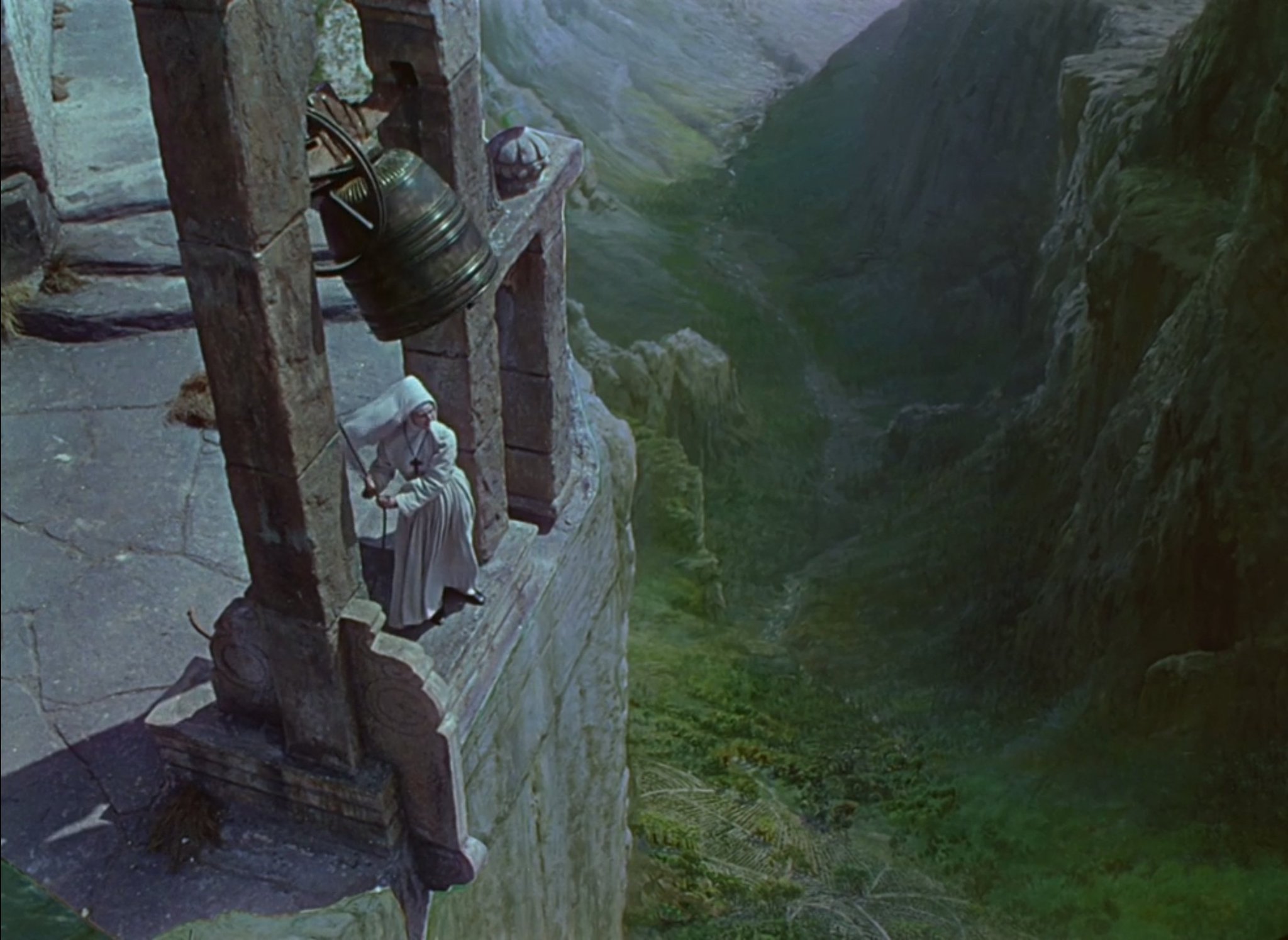Pushing the Envelope
Some films are beautiful, and some films are strangely exotic. However, there are only a few films that are both beautiful and strangely exotic. Black Narcissus (1947) is one of those few. Quite simply, it’s one of the most beautiful films every made. It was once cited by the Technicolor company as the best example of what could be achieved with color in film.
Cinematographer Jack Cardiff pushed the envelope with color and shadow in this film, especially as it relates to placing the characters within or apart from their surroundings. Cardiff used outlines of color, often against contrasting hues, to strengthen the mood of the scene and to physically convey a sense of that character’s emotional state. You can see the influence of Vermeer, Rembrandt, and Van Gogh in many of his shots.
As you take in the sweeping vistas, keep in mind that not a single frame of the film was shot on location. Much of the credit here goes to the movie’s production designer Alfred Junge, as well as to Peter Ellenshaw, who painted the mattes that evoke the distant mountains and castle.
Co-directors Michael Powell and Emeric Pressburger were equally daring in their experimentation. In one 12-minute sequence near the end, where the action quickly moves toward an inevitable climax, there’s no dialogue. In the sequence, the directors matched the visuals to the music, rather than the other way around. And while there’s more than enough plot to interest the audience, much of the dramatic tension comes from a heightened sense of space and its influence on the characters.
The story revolves around a group of nuns who attempt to establish a dispensary and school in the Himalayan mountains. The isolation takes its toll on the Sisters — emotionally, religiously, and sexually. One flashback scene, in which Sister Clodagh (played by Deborah Kerr) remembers her past love life, was cut from the U.S. release of the film so as not to offend the Catholic Legion of Decency.
Powell would keep pushing the envelope creatively until Peeping Tom (1960). That’s when many in Britain thought he had pushed too far. In addition to Black Narcissus, his other great films include The Thief of Bagdad (1940), 49th Parallel (1941), The Life and Death of Colonel Blimp (1943), I Know Where I’m Going! (1945), A Matter of Life and Death a.k.a. Stairway to Heaven, The Red Shoes (1948), and The Small Back Room (1949). All are well worth watching.
Black Narcissus
(1947; directed by Michael Powell and Emeric Pressburger)
The Criterion Collection (Blu-ray and DVD)
Tuesday, February 13 at 6:15 p.m. eastern on Turner Classic Movies
Reviews